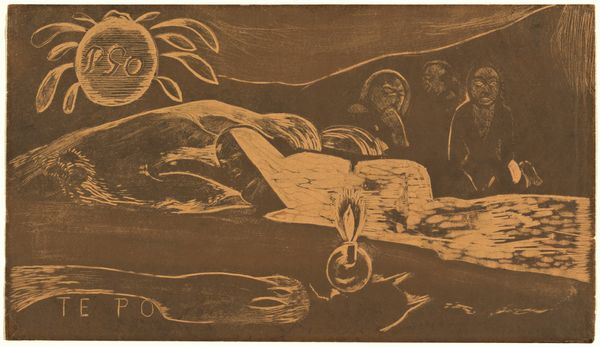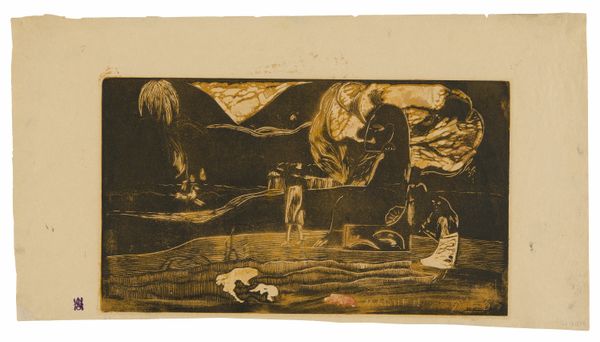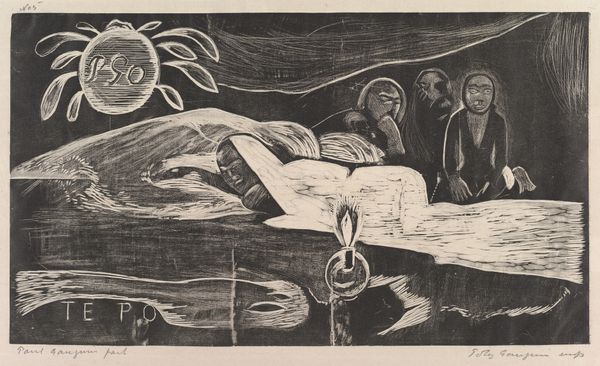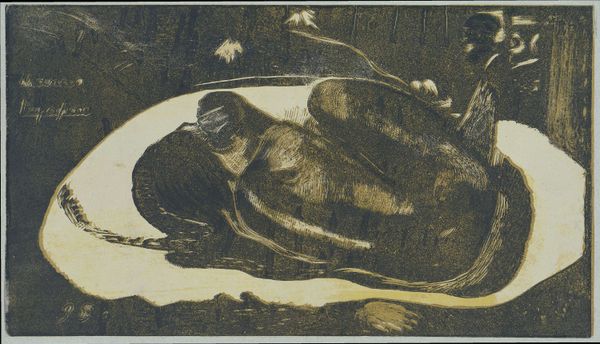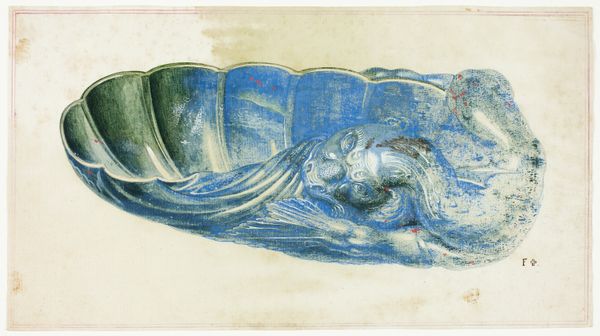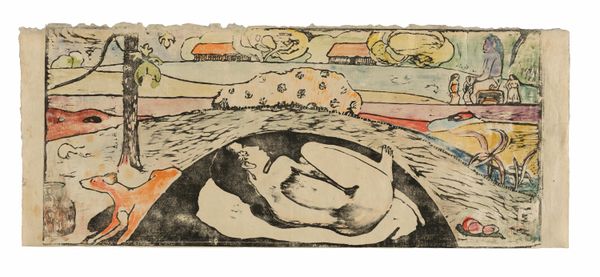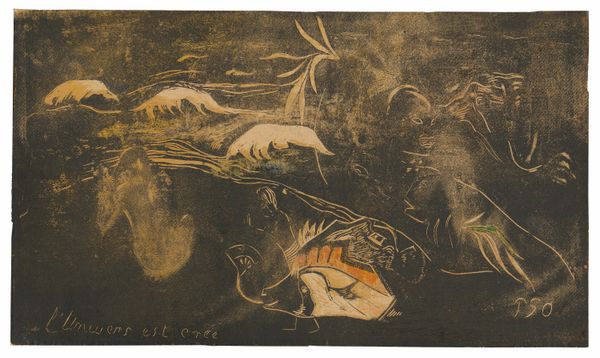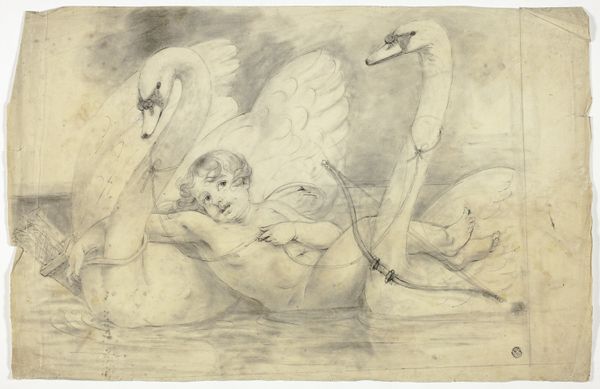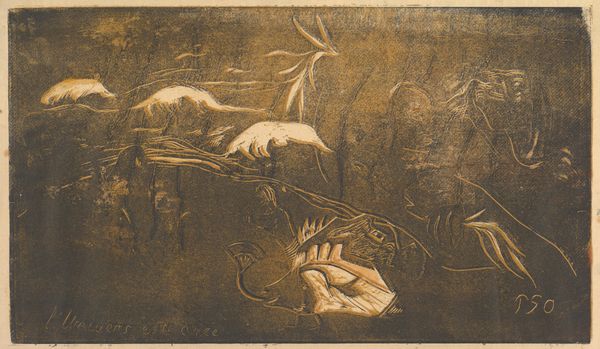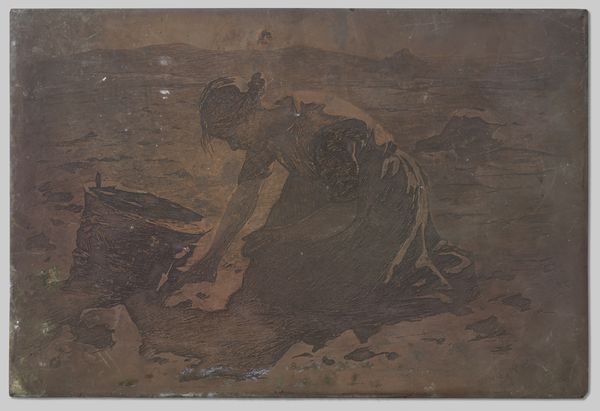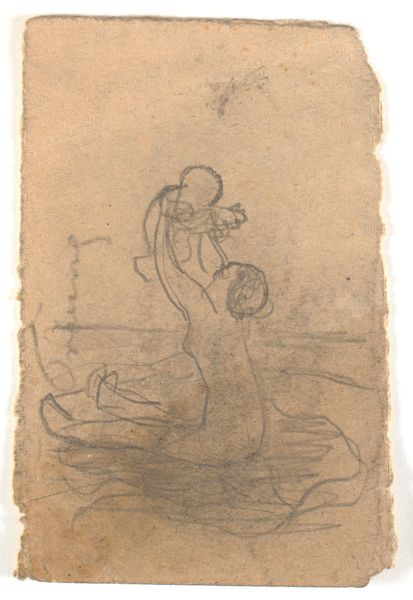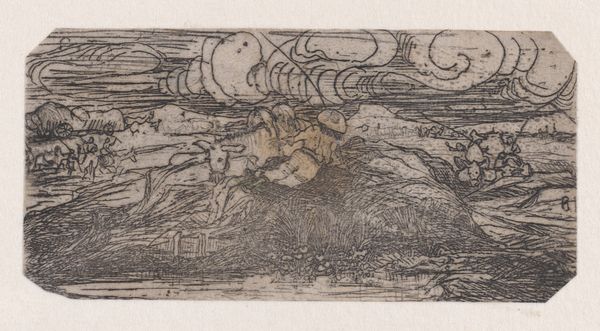
drawing, monotype, fibre-art, print, paper
#
drawing
#
monotype
#
fibre-art
# print
#
paper
#
france
#
symbolism
#
post-impressionism
Dimensions: 204 × 355 mm (image); 207 × 358 mm (sheet)
Copyright: Public Domain
Editor: So, here we have Paul Gauguin's "Te po (The Night) from the Noa Noa Suite," created around 1893-1894. It's a monotype on paper, and the muted colours give it this almost dreamlike quality. What strikes you about this print? Curator: The texture, for me, is crucial. The rough, almost fabric-like quality of the paper and the way the ink has been applied point to a conscious de-emphasis on slick, academic printmaking. We need to consider Gauguin's deliberate move away from established art markets and toward "primitive" aesthetics. Editor: That makes sense. So you’re saying it’s a deliberate rejection of high art? Curator: Exactly! It challenges the established hierarchy that placed printmaking, especially monotype which produces a single unique image, lower than painting. It’s not just a stylistic choice; it’s about questioning what constitutes valuable artistic labor. The 'Noa Noa' suite itself needs situating within the colonial context, reflecting Gauguin’s consumption and representation of Tahitian culture. What does that imply when using inexpensive and "unrefined" material for works depicting the lives of colonized people? Editor: So, it's about the materials and methods reflecting a whole set of ideas about art and colonialism? Curator: Precisely. Consider the implications of a Parisian artist using printmaking—a readily reproducible medium—to depict and essentially market his experiences in Tahiti. How does the material – cheap paper and a quick printing method – influence how the Tahitian people were being portrayed? Editor: Wow, I hadn't considered the colonial aspect in relation to the medium itself. I was so focused on the style. Curator: It's all interconnected! The materials, the process, the market, and the message – they all contribute to our understanding of Gauguin's complex and often problematic position. Editor: This has totally changed my perspective. I’ll never look at a Gauguin print the same way again!
Comments
No comments
Be the first to comment and join the conversation on the ultimate creative platform.
